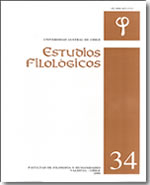Linguistic contact as a factor in dialect configuration. A case study from the South American Andes
Main Article Content
Abstract
The variety of Quechua spoken in Santiago del Estero (Argentina), the southern limit of QIIC, is characterized by special, quite distinctive structures often attributed to the geographical location of this population on the periphery of the Quechua dialect complex.
Our study will demonstrate that the most important determining factor behind the linguistic constructions peculiar to the Quechua spoken in Santiago del Estero are three processes of linguistic contact which have taken place in Northwest Argentina. Two are contacts between dialects, while the third involves two different languages.
The first has to do with contact in the Santiago area between QI, QIIA and QIIB, brought by the Peruvian yanaconas who accompanied the Spanish conquerors and early settlers, and QIIC, which had previously been implanted by the mitmaqkuna Incas. A process of collective linguistic accommodation paved the way for a variety of Quechuan koiné in Santiago del Estero.
In chronological order the second event took place between the original Santiago koiné and the prestige variety of Cuzco-Bolivian Quechua. The influence exerted by the latter over the former supposed a marked process of standardization.
The third process of interlanguage contact is the result of the coexistence of Quechua and Spanish in Santiago del Estero, where Spanish is the high variety in an intense diglossic situation in which Quechua is the low variety. Said contact has given way to a series of structural tranfers from Spanish to Santiago Quechua through the process of structural interference or convergence.

